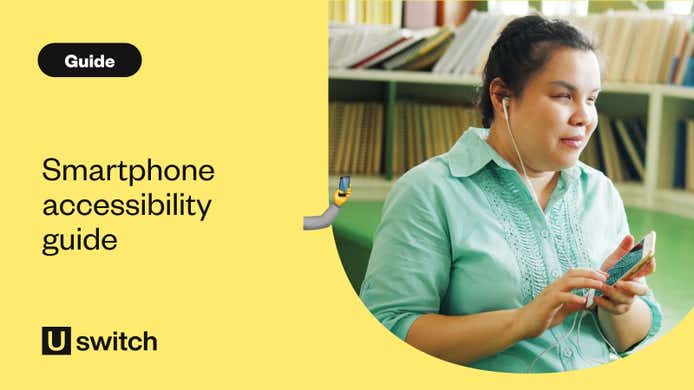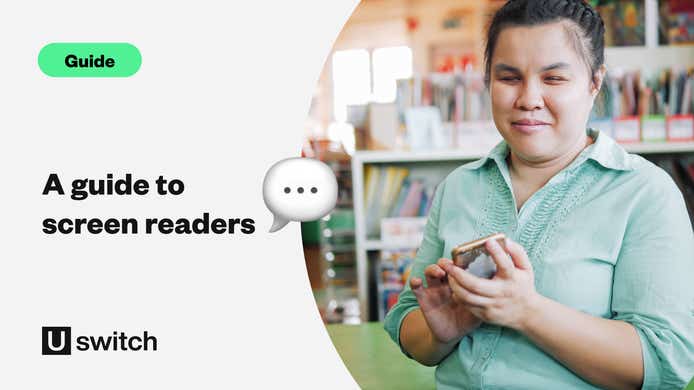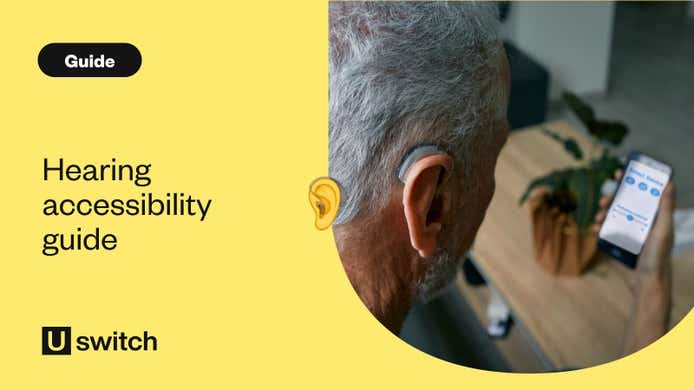Whether you’re watching your favourite TV drama or catching up on the news, it’s not always easy keeping up with what’s being said on screen – especially if you have trouble with hearing loss.
According to the World Health Organisation “over 5% of the world’s population” live with some form of hearing loss, which amounts to around 430 million people.
That’s a lot of people who might struggle to understand content on their mobile phones. The good news is that the Accessibility suite on both Android and Apple phones have subtitle and captions services on board. Even better, both companies went further and developed software that integrates with apps on their respective phones. Google went first with a feature called ‘Live Caption’, which was first launched in 2019 for the Pixel 4. Then Apple followed suit in 2022 with the announcement of ‘Live Captions’ (just to be confusing, surely), which is available for iPhone 11 and later.
What’s the difference between Google’s Live Caption and Apple’s Live Captions? How are they different from normal subtitles and captions? Most importantly, how do you access these features? Our handy Live Caption guide is here to help.
We use the terms subtitles and captions interchangeably to refer to text designed to guide viewers through media.
What is Live Caption?

Live Caption is a tool developed by Google, designed to subtitle media as it's happening.
The feature can work regardless of whether the intended media has a subtitle setting or not. Live Caption works across a range of applications, including audio only formats such as podcasts and BBC Sounds, and it even works on adverts.
As long as the app allows Live Caption to have access to its audio, the software will transcribe audio into text.
How do I set up Live Caption on an Android phone?
- On your Android device, press the volume button
- Under the volume controls, tap ‘More’
- Tap ‘Live Caption’ to turn it on or off
- Tap ‘Done’ to go back to your previous screen
If those steps don't work, you can always go into your Settings and search for 'Live Caption' to turn it on.
How do I know it’s working?
Live Caption is straightforward. Once you enable the setting it will do the rest for you.
This is currently only available in English though there is a promise of more language options to come. Live Caption is currently available on Android and a select group of phones including Pixel and Samsung.
If you have a Pixel phone, the software will also caption calls as well, though you may need to enable this within the settings.
When in use, text appears as white on a black background. The box it appears in can be moved around the screen.
Does it work with the standard accessibility features?
If your chosen media already has a subtitle track to work with, your phone should offer the opportunity to turn them off or customise how the words appear on your screen.
Head into your phone’s Settings and find the ‘subtitle/caption’ menu. Look for an option that resembles ‘caption size and style’. Tap it and you will be brought to the customisation menu.
From this screen you can choose to set the text size. The choices range from very small to very large.
Within the next option, ‘Caption style’ you can select how the text and box are presented.
For example, you can choose from black text on a white background, yellow text on a black background, and white text on a black background.
If this isn’t to your liking then your smart device should allow you to alter the font style, the background box colour, and the text colour. Unfortunately, some apps may not accept customisations. While our green text choice appeared on YouTube, the change didn’t take effect on Netflix.
What are some of the other features of Live Caption?
If you wish, you can opt to censor profanity, inside the Live Caption settings menu. Whilst there, the ability to show sound effects such as laughter can also be tweaked.
If for some reason you don’t want a Live Caption shortcut to appear in your volume menu that can also be disabled within the settings.
How much data does Live Caption need?
Google points out that: “Live Caption doesn't use mobile data or an internet connection. All audio and captions are processed on the device and are never stored or sent to Google.”
The live subtitling appears to be almost instant. What’s more, during testing, we found it to be very accurate. While transcribing, the software does a good job of keeping pace with the speech. That’s not to say the system is perfect though. During our time with it, we noticed an incorrect word or two.
What are Live Captions on the iPhone?
In May 2022, Apple announced that Live Captions would be coming to iPhones, iPads and Mac computers in the next round of software updates.
Live Captions on iPhone provide a real-time transcription of spoken audio. You can use Live Captions to follow the audio in any app, including FaceTime and Podcasts, and you can even get transcriptions of live conversations that are happening around you.
How do I set up Live Captions on an iPhone?
- Tap the phone’s ‘Settings app’
- Scroll down the menu until you come across ‘Accessibility’
- Tap ‘Live Captions’
- From here you can turn Live Captions on or off and adjust the settings
How do I know it’s working?
The interface may look different to its Android counterparts, but the iPhone offers a similar service with the same kind of choices.
By default, Live Captions are shown regardless of the app you’re using. To get live captions only for certain apps, you can turn them on or off in the Live Captions settings. All you have to do is scroll down to ‘In-App Live Captions’.
Does it work with the standard accessibility features?
Some users have complained that Live Captions will even play on top of other pre-existing captions. Turning them off or changing the way captions are presented is easy in the Settings menu.
You can select font, style and size. You can also make other choices such as the colour of the text, or the colour of the box it comes in.
It is important to mention that after you have enabled subtitles in the handset’s settings you may still need to select the captions or subtitle option within a chosen app.
Customised captions may not work on all applications. For instance, YouTube accepted our choice of red text while Netflix did not.
How are Live Captions different from standard features?
As far as the Accessibility suite goes, both features are intended to help people with some degree of hearing loss. A basic subtitle/caption option is available on both Android and Apple devices.
This means that if there is a subtitle track available on the app you’re using, then this setting should turn it on for you. This doesn’t always work though, and of course, if the app doesn’t support subtitles, then you will be out of luck.
These basic subtitling services also allow the user to customise how text is displayed on screen. For example, you can choose for text to appear in green as you watch your favourite show, or adjust the size of the captions.
Live Caption and Live Captions provide a similar, but more advanced assistance. The software transcribes audio from scratch on your selected media as it is being spoken. This means the feature will work on whatever audio it hears, regardless of the app you’re using.
Live Caption is available on most Android devices using Android 10 or newer and is available in English on the Google Pixel 2 and later devices.
Live Captions is available on iPhone 11 and later and is available if the primary language is set to English (U.S.) or English (Canada). Apple also points out that ‘the accuracy of Live Captions may vary and shouldn’t be relied upon in high-risk or emergency situations’.
The history of subtitling and captioning
It is fair to say captions or subtitles have become a way of life for many people. Whether taking in a film on iPlayer, or perusing Prime Video’s finest, you’re sure to find a subtitle track to go with it.
In fact, within the UK it has been a legal requirement for broadcasters to provide a form of subtitling since 1990.
With so many people using subtitles for their entertainment, it’s not surprising to learn that smartphones can also provide those all-important captions.




